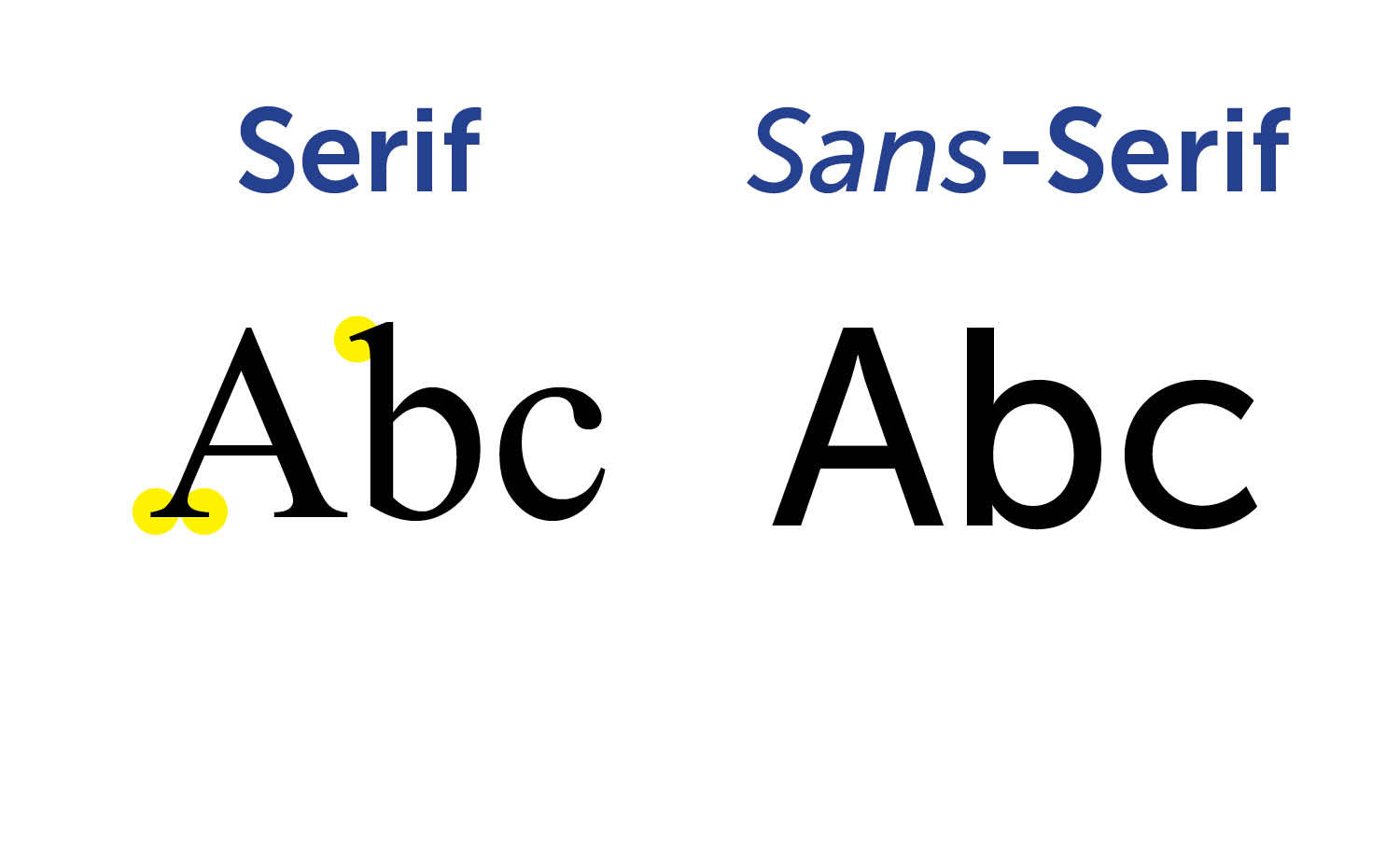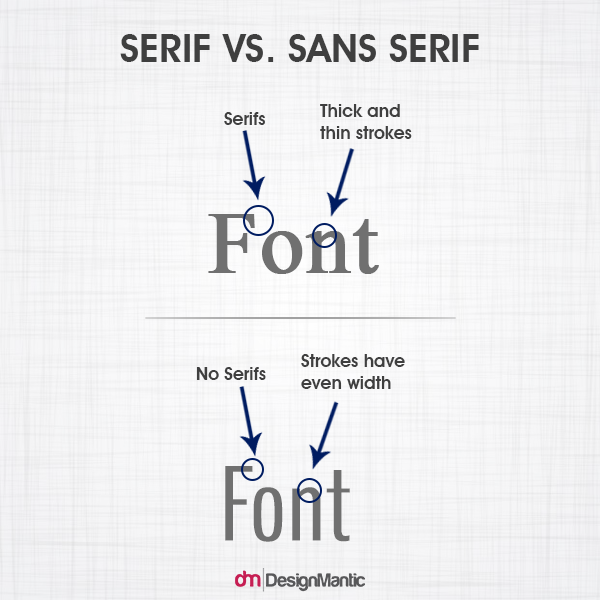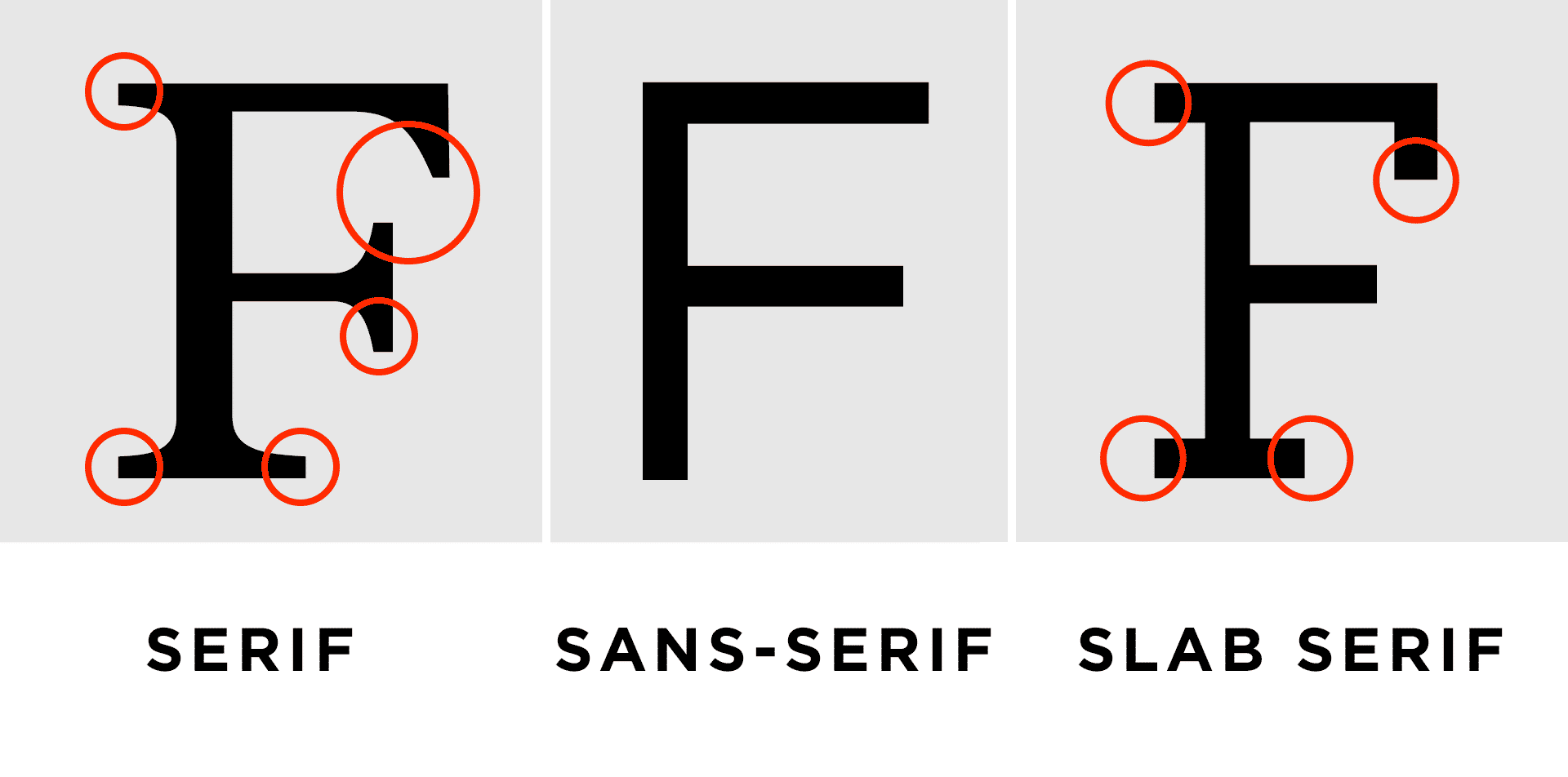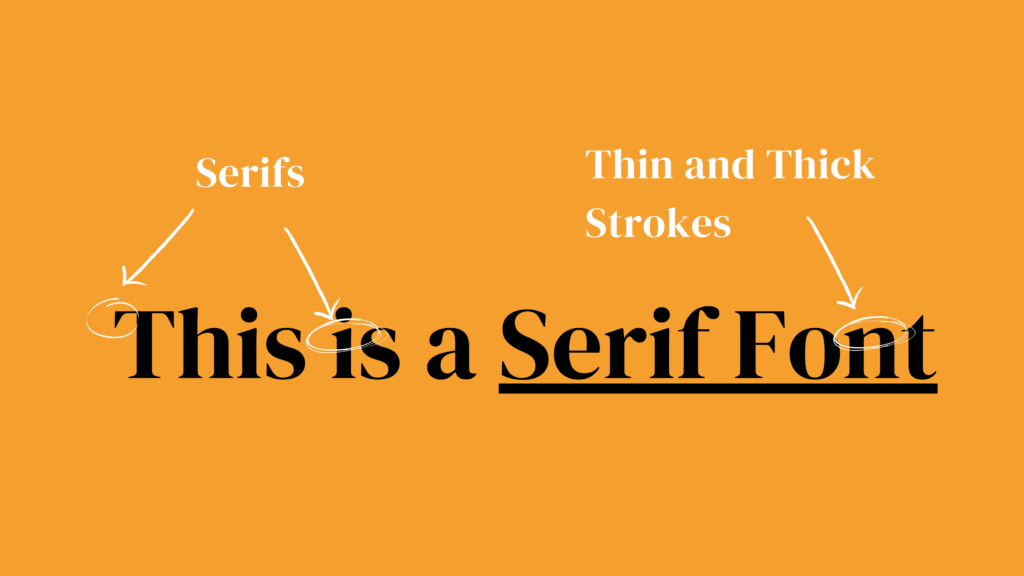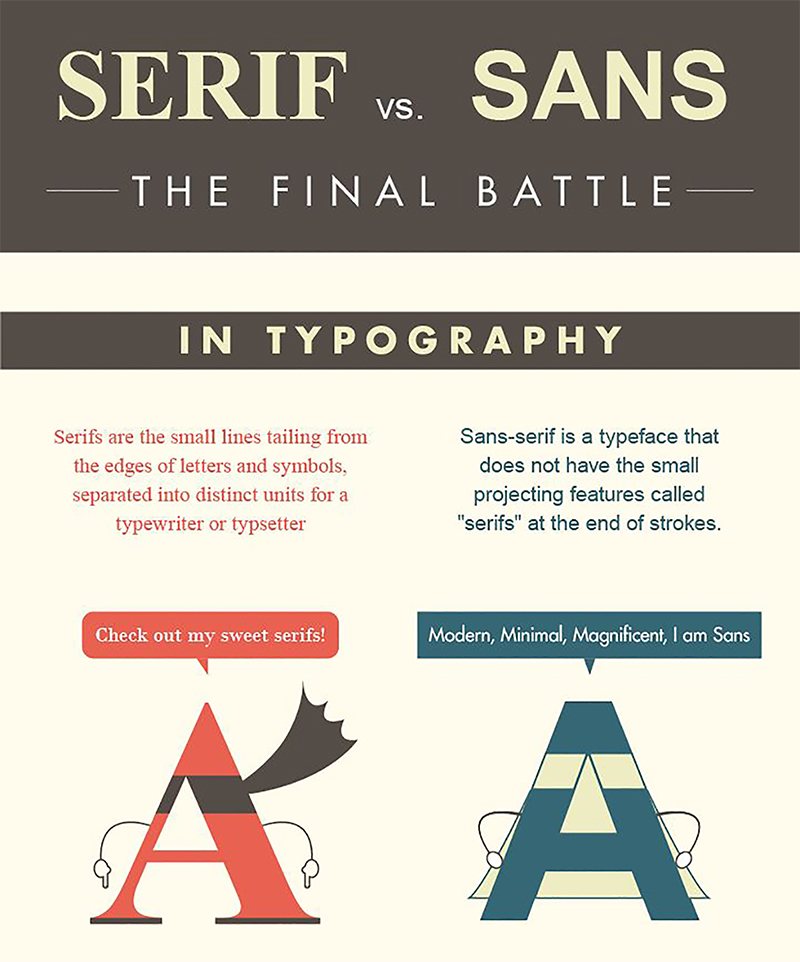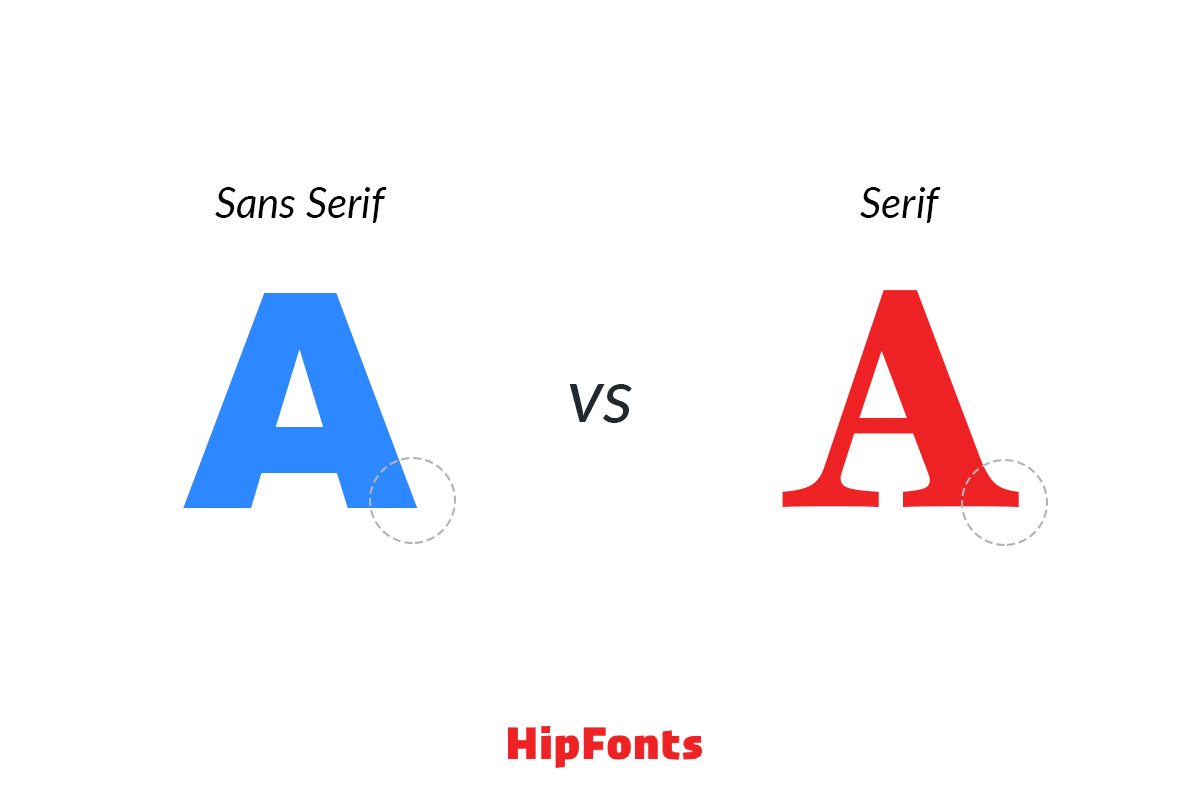Difference Between Serif And Sans Serif Fonts
Difference Between Serif And Sans Serif Fonts - Web serif letters are typically seen as more traditional and formal, while sans serif letters are more modern and casual. Web when to use a serif vs. Serif fonts are often used for print. Web serif fonts are a great choice for brands that want to be seen as trustworthy, established, and reliable. “because serif typefaces date back to the 18th century, companies that. Serif typefaces like times new roman are suggestive of. Web serif fonts can look authoritative, professional, and suggest the weight of history or experience.
Web serif fonts are a great choice for brands that want to be seen as trustworthy, established, and reliable. Web serif fonts can look authoritative, professional, and suggest the weight of history or experience. “because serif typefaces date back to the 18th century, companies that. Web serif letters are typically seen as more traditional and formal, while sans serif letters are more modern and casual. Serif typefaces like times new roman are suggestive of. Web when to use a serif vs. Serif fonts are often used for print.
Serif typefaces like times new roman are suggestive of. Web serif fonts can look authoritative, professional, and suggest the weight of history or experience. Web serif letters are typically seen as more traditional and formal, while sans serif letters are more modern and casual. “because serif typefaces date back to the 18th century, companies that. Web serif fonts are a great choice for brands that want to be seen as trustworthy, established, and reliable. Serif fonts are often used for print. Web when to use a serif vs.
Serif vs. Sans Serif Fonts
Web serif letters are typically seen as more traditional and formal, while sans serif letters are more modern and casual. Serif fonts are often used for print. Web when to use a serif vs. Web serif fonts can look authoritative, professional, and suggest the weight of history or experience. “because serif typefaces date back to the 18th century, companies that.
Visual Design Glossary Explained DesignMantic The Design Shop
Serif typefaces like times new roman are suggestive of. Serif fonts are often used for print. Web serif letters are typically seen as more traditional and formal, while sans serif letters are more modern and casual. “because serif typefaces date back to the 18th century, companies that. Web when to use a serif vs.
Difference Between Serif and Sans Serif
Web serif fonts are a great choice for brands that want to be seen as trustworthy, established, and reliable. Web serif letters are typically seen as more traditional and formal, while sans serif letters are more modern and casual. Serif typefaces like times new roman are suggestive of. Serif fonts are often used for print. “because serif typefaces date back.
Serif vs. Sans Serif How Are These Fonts Different?
“because serif typefaces date back to the 18th century, companies that. Web serif letters are typically seen as more traditional and formal, while sans serif letters are more modern and casual. Web when to use a serif vs. Web serif fonts are a great choice for brands that want to be seen as trustworthy, established, and reliable. Serif typefaces like.
Serif vs. Sans Serif fonts
Web serif letters are typically seen as more traditional and formal, while sans serif letters are more modern and casual. Web serif fonts are a great choice for brands that want to be seen as trustworthy, established, and reliable. Web when to use a serif vs. Serif fonts are often used for print. Web serif fonts can look authoritative, professional,.
Serif vs. Sans Serif Fonts YouTube
Serif typefaces like times new roman are suggestive of. Web serif fonts can look authoritative, professional, and suggest the weight of history or experience. Serif fonts are often used for print. “because serif typefaces date back to the 18th century, companies that. Web serif letters are typically seen as more traditional and formal, while sans serif letters are more modern.
How to Choose the Perfect Font for your Brand Atelier LKS
Web serif fonts are a great choice for brands that want to be seen as trustworthy, established, and reliable. Web serif fonts can look authoritative, professional, and suggest the weight of history or experience. “because serif typefaces date back to the 18th century, companies that. Serif typefaces like times new roman are suggestive of. Web when to use a serif.
Here's a Guide To Serif vs. Sans Serif Fonts Simplified
Serif typefaces like times new roman are suggestive of. Web serif fonts are a great choice for brands that want to be seen as trustworthy, established, and reliable. Web serif letters are typically seen as more traditional and formal, while sans serif letters are more modern and casual. Serif fonts are often used for print. Web serif fonts can look.
Serif vs Sans Serif
Serif fonts are often used for print. Web when to use a serif vs. Web serif fonts can look authoritative, professional, and suggest the weight of history or experience. Web serif letters are typically seen as more traditional and formal, while sans serif letters are more modern and casual. Serif typefaces like times new roman are suggestive of.
What Is The Difference Between a Serif and Sans Serif Font? HipFonts
“because serif typefaces date back to the 18th century, companies that. Web serif fonts can look authoritative, professional, and suggest the weight of history or experience. Web serif letters are typically seen as more traditional and formal, while sans serif letters are more modern and casual. Serif fonts are often used for print. Web when to use a serif vs.
Web Serif Fonts Can Look Authoritative, Professional, And Suggest The Weight Of History Or Experience.
Serif typefaces like times new roman are suggestive of. Web serif letters are typically seen as more traditional and formal, while sans serif letters are more modern and casual. Web when to use a serif vs. “because serif typefaces date back to the 18th century, companies that.
Serif Fonts Are Often Used For Print.
Web serif fonts are a great choice for brands that want to be seen as trustworthy, established, and reliable.
